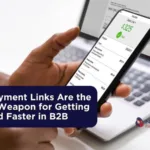Previously seen in Green Sheet
Embedded finance: Getting from glitter to gold
In most industries, new tech is exciting until it’s not. The old saying, “All that glitters is not gold,” could apply to payments. People were excited to see the first Bluetooth card reader and personalized business dashboard. But shiny tech doesn’t stay new for long; it needs to keep producing recurring revenue streams to keep us and our merchants in the game.
Embedded finance can be a gold mine for ISOs and merchant level salespeople (MLSs) that partner with the right technology providers. ISOs can build or buy by designing and developing products in house or aligning with readymade solution providers.
Big fintech companies like Stripe, Square, QuickBooks, Toast and PayPal have embedded financial products into their platforms with varying degrees of success. The lucky ones added income to their bottom line. Others, like Block, the parent company of Square and the Cash App, lost a lot of money and had to retool.
Early-market glitter
When Square Inc. launched its mobile payment app in 2009, it gained millions of small and midsize merchant customers. Over time, other fintechs began to chip away at Square’s market share, and co-founders Jack Dorsey and Jim McKelvey eventually rebranded as Block Inc. in 2021.
Block has faced a slew of economic and financial challenges recently, according to the company’s 10-K report, published Feb. 24, 2025, in the following areas:
- Cryptocurrency volatility
- Reliance on third-party providers for payment processing
- Data security vulnerabilities
- Regulatory uncertainties, including evolving laws regarding AI
- Inflation and interest rate increases and potential impact on consumer spend
- Securing favorable terms for financing
In a separate article, “Block shares fall on profit, revenue miss,” published Feb. 20, 2025, CNBC reporter MacKenzie Sigalos described the company’s pivot to embedded finance:
“Block’s payments business has expanded beyond traditional point-of-sale transactions to include lending and financial services. In 2021, the company acquired Australian buy now, pay later firm Afterpay for $29 billion, integrating the service into Cash App and Square’s ecosystem. This week, Afterpay on the Cash App card begins rolling out.”
The company told Sigalos they want to provide more credit, financing and banking options to customers. And on a recent earnings call, Dorsey mentioned plans to integrate the Cash App and Square POS into a single platform to reduce reliance on multiple applications.
Recurring-revenue gold
Managing a business is easier in the digital age. Yesterday’s filing cabinets have been replaced by dashboards that offer a suite of financial tools. Payroll, insurance, BNPL and banking-as-a-service are just a few examples. When businesses need access to working capital, software programs can help them determine eligibility and other requirements.
The ISO world needs to catch up to the fintech world. Unlike us, fintechs sell value-added services to create stickiness.
They add features to their applications and platforms and throw in payments to create a seamless user experience. That’s the opposite of old-school ISOs that create a payment app and throw in a few value-added services like a glitter bomb.
Users who rely on Stripe or Square Capital for financing or payroll are not likely to switch to another provider, especially a generic payment provider. They want feature-rich, all-in-one solutions that are customized for their industries and can adapt to their changing needs.
Don’t be a generalist
If you want to reach these business owners, find good partners, and don’t try to be a jack of all trades. It’s not easy to sell stuff that falls outside our areas of expertise. The right partners can help us sell more and extend and monetize customer relationships. These partners ideally have automated systems that can onboard customers without requiring phone calls, because that is the future of merchant services.
We’re way past the point where providing excellent customer service could be considered a differentiator. Payment providers who didn’t give great service went out of business years ago. It’s up to the rest of us to offer value-added services without creating friction or burying merchants in paperwork.
Embedded finance solutions are shaping the future. Every ISO needs to have these products and services on their radar. Every independent software vendor needs to have payments on their roadmap.
CLICK HERE TO FIND MORE ABOUT OUR PROGRAMS
FAQ: Frequently Asked Questions
What is embedded finance?
Embedded finance refers to integrating financial services—like payments, lending, or insurance—directly into non-financial platforms, allowing businesses to offer financial solutions without being traditional financial institutions.
Why is embedded finance important for ISOs and MLSs?
Independent Sales Organizations (ISOs) and Merchant Level Salespeople (MLSs) can leverage embedded finance to create new revenue streams by offering financial products alongside payment processing.
What challenges do companies face with embedded finance?
Companies like Block (formerly Square) have faced hurdles such as cryptocurrency volatility, regulatory uncertainties, reliance on third-party providers, and inflation impacts on consumer spending.
How can businesses succeed with embedded finance?
Success depends on choosing the right technology partners, ensuring compliance with evolving regulations, and continuously innovating to meet merchant needs.
What are some examples of embedded finance in action?
Big fintech companies like Stripe, Square, QuickBooks, Toast, and PayPal have integrated financial services into their platforms, with varying degrees of success.
Would you like me to refine or expand on any of these points?







